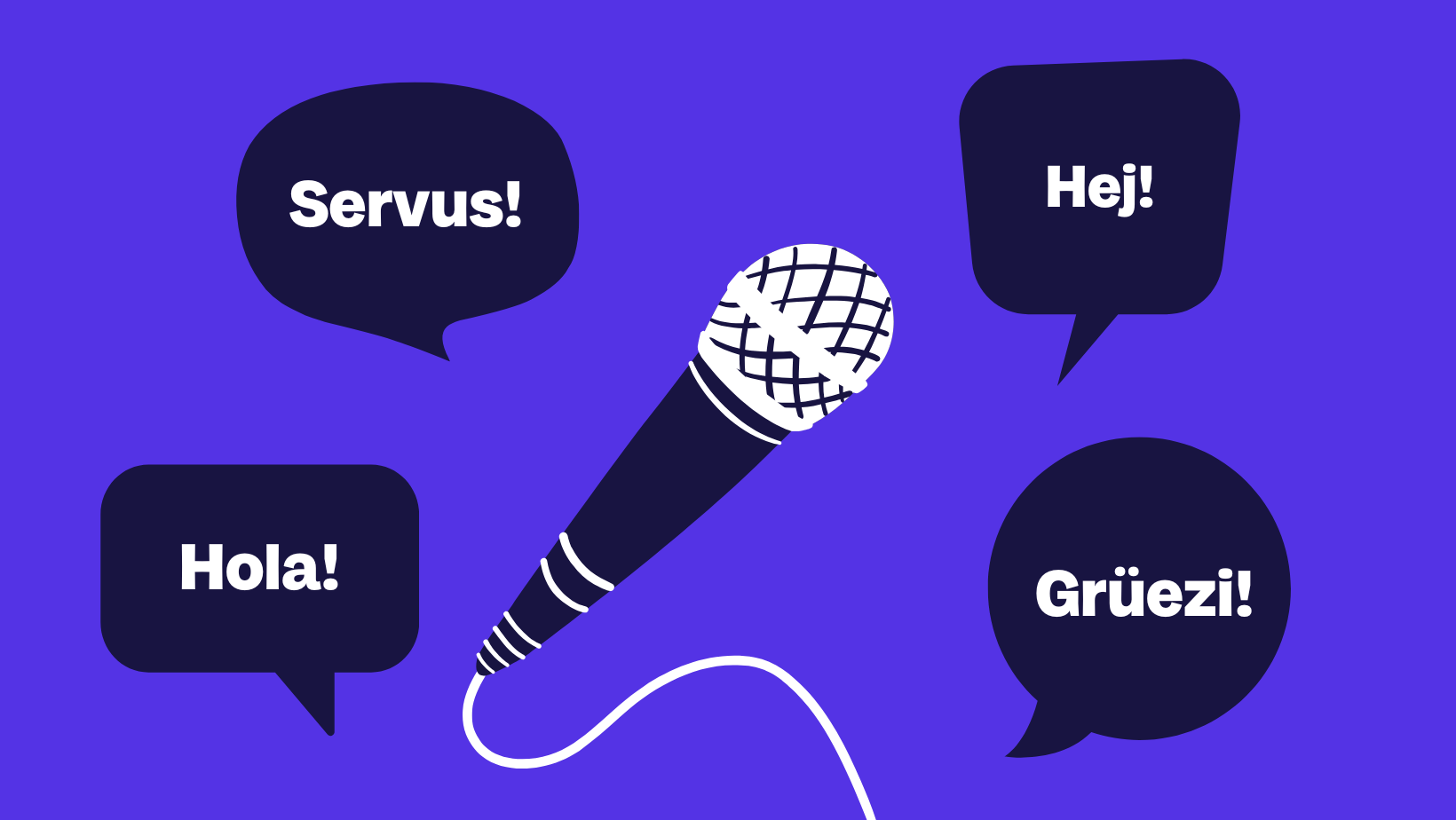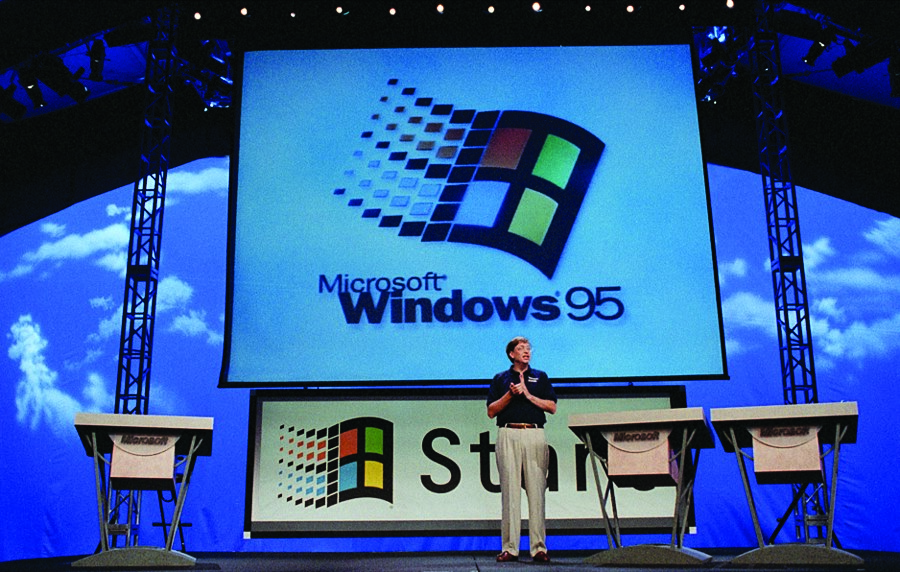Recognizable at the first Note: How Dialects and Accents shape Brand Voices

„Seitenbacher-Müsli, woisch, des isch des Müsli von dem Seitenbacher!“
A glance at the muesli packet on the supermarket shelf is enough to conjure up the distinctive voice of Willi Pfannenschwarz in your head. The Swabian dialect of the Seitenbacher company director has long since become a trademark of the German food company through years of advertising on the radio and other media. It gives Seitenbacher a homely and authentic sound: it tells the story of a company that is proud of its origins.
Seitenbacher shows how dialect works as a storytelling tool. Dialects and accents give a brand recognition value and create a strong connection to the target group. How do other companies use this strategy – and what can we learn from them?
The Power of Brand Voice: More than just Words
Every brand tells a story. But how it tells it makes all the difference. Just as people express their personalities through the way they communicate, brand identity reveals itself in its unique voice: Is it down-to-earth and tradition-conscious like Edeka, which creates trust by emphasizing regional products? Or is it motivated by a sense of adventure, as in the case of Red Bull, which drives its target groups to peak performance? A brand that knows its personality and what story it wants to tell will find the right tone more quickly. However, standing out from the crowd, remaining audible, and appearing authentic simultaneously require strategic sensitivity.
Klicken Sie auf den unteren Button, um den Inhalt von giphy.com zu laden.
Accents and Dialects as a Storytelling-Tool
One particularly effective stylistic device for making a brand unmistakable is to make its origin audible. While many companies rely on neutral advertising voices, some use accents and dialects to convey their brand story even more authentically. In addition to the distinctive voice of Seitenbacher, IKEA shows how a deliberately used accent not only conveys the identity of a brand but also makes the speaker’s voice itself an integral part of the brand perception.
IKEA: Swedish Charm as a Trademark
Since 1999, the actor Jonas Bergström has lent his voice to IKEA. Since then, he has shaped the brand experience and ensured a high recognition value. But why does this voice fit so perfectly with the Swedish furniture store – and what role does it play in storytelling?
A glance at IKEA’s target group provides an answer. The company primarily targets young people and families who appreciate functional and affordable design. Bergström’s gentle voice has exactly the right effect: it sounds friendly, almost fatherly, and at the same time conveys competence and trust. His Swedish accent reinforces this perception by bringing to life the Scandinavian way of life, which is characterized by a sense of ease and a close connection to nature. In this way, IKEA not only talks about furniture but also lifestyle. The voice conveys the feeling of a home that is there for everyone – functional, cozy, and approachable.
IKEA and Seitenbacher prove that years of using dialect as a storytelling tool can make a brand unmistakable. But how do brands manage to keep their brand voice lively and interesting despite a fixed dialect or accent?
Changing Brand Voices: Ricola shows how it’s done
The Swiss company Ricola shows that consistency doesn’t have to mean standing still. A dialect can create both consistency and leeway to tell stories in a new way. A good example is the 2016 commercial “Wer hat’s erfunden?”. In it, Ricola combines Swiss and Finnish dialects to humorously emphasize its true origin and dispel misunderstandings. The clever use of both dialects keeps the message clear without being monotonous.
The brand has continued to develop and was rebranded in 2021. The aim was to make the connection to nature tangible as a central corporate value for the target group, without abandoning the familiar Swiss German dialect. The result of this strategy can already be seen in the commercials for the “Nimm einfach Ricola” campaign from 2021 and 2022. The company was given a new face: an animated beaver with a Swiss dialect that delivered the core message at the end of the commercials. The Swiss German was retained but given a modern interpretation with a new voice and character.
The beaver symbolizes a love of nature and endurance, perfectly embodying Ricola’s values of sustainability and tradition. The Swiss company thus proves that a consistently used dialect can remain flexible through targeted additions, without losing any of its recognition value.
Best Practices: How to use Dialect successfully in your Brand Voice
Seitenbacher, IKEA and Ricola show that dialect can be a successful tool for shaping brand character, bringing stories to life and building an emotional connection with the target audience. But not every brand that uses dialect or an accent automatically succeeds. The difference lies in how it is used: is the language authentic? Does it reflect the brand story? And above all, is it appropriate for the target audience?
To ensure that a brand voice in a dialect not only attracts attention but also works as a storytelling tool in the long term, it is worth observing a few proven principles:
1. Authenticity builds trust
Dialect can add character to a brand, but only if it is authentic. Using terms that sound unnatural or like a “fake” dialect can make a company’s story seem untrustworthy. One example of this is a commercial by the Swiss company Coop, which used a Swiss dialect but incorporated High German terms such as “doch” and “stets”. This can come across as inauthentic or strange to the target audience. To avoid such faux pas, companies should consistently use native speakers as spokespeople.
2. Comprehensibility as the key to success
While dialects and accents can make a story more tangible, they should not be allowed to obscure the message. The company Kerrygold, for example, uses a slight Irish accent that creates brand recognition without creating an obstacle.
3. Using or avoiding stereotypes in a targeted way
The conscious use of dialects and accents can reinforce clichés or inadvertently serve prejudices. It is particularly problematic when a dialect is used only for a single campaign without being embedded in a long-term strategy. One example is the Super Bowl commercial “Get Happy” by Volkswagen (2013), in which a white actor speaks with an exaggerated Jamaican accent. The presentation was intended to convey a happy attitude towards life, but it led to accusations of racism.
Klicken Sie auf den unteren Button, um den Inhalt von giphy.com zu laden.
However, the use of exaggerated dialects or acts does not always lead to negative reactions. Used in a targeted way, they can also become a trademark. One example is the Schöfferhofer wheat beer commercial from the 1990s with the famous line: “Die so schön hat geprickelt in meinem Bauchnabel”. Or the Nescafé campaign from 1992, which still enjoys cult status today with “Ich habe gar kein Auto, Signorina”.
Both brands used an accent to create a certain atmosphere and reinforce the message. While Schöfferhofer Weizen used a French accent to create a humorous, slightly erotic note, Nescafé used an Italian accent to convey lightness and enjoyment. Both campaigns were very well received by their respective target groups and are still closely associated with the brands today.
The examples show that the dialect used just once can work. But without a deeper connection to the brand, there is a risk that it will be seen as a replaceable stylistic device or, as in Volkswagen’s Super Bowl ad, will be met with criticism. For a long-term storytelling strategy, it therefore usually makes more sense to build a consistent identity instead of relying on stereotypical representations.
4. Adaptability to different target groups
Companies with a broad target group have to weigh up regional identity and comprehensibility. A dialect can create closeness and recognition value but carries the risk of excluding parts of the target group. While the Flensburger brewery emphasizes its roots with a North German dialect, this strategy would make less sense for a global brand like Nike. Brands should therefore check whether a particular dialect will appeal to the right target group.

The strategic use of Accents and Dialects in Brand Voices
Dialects and accents are more than just a means of recognition: they can charge a brand with emotion, emphasize its origin, and tell individual stories. However, their success depends on how they are used. While brands such as IKEA, Seitenbacher, and Ricola show that dialect can shape a brand voice while still leaving room for development, there are risks to be considered when using dialects and accents thoughtlessly and purely for short-term gain. Cases such as Volkswagen and Coop show that inappropriate or incorrect use of language can quickly come across as alienating and miss the desired effect.
A successful brand voice with a dialect or accent is authentic, understandable, and consistent. It supports the brand message rather than distracting from it and remains flexible enough to evolve with the brand. Companies that use dialect as a strategic storytelling tool have the chance to be not only heard but also felt and remembered.
Klicken Sie auf den unteren Button, um den Inhalt von giphy.com zu laden.
If you want to know more about IKEA and the history of the Swedish furniture giant, we recommend our storytelling close-up: Storytelling close-up IKEA: a little story behind every piece of furniture
Share this article
Related articles

8 April 2025





